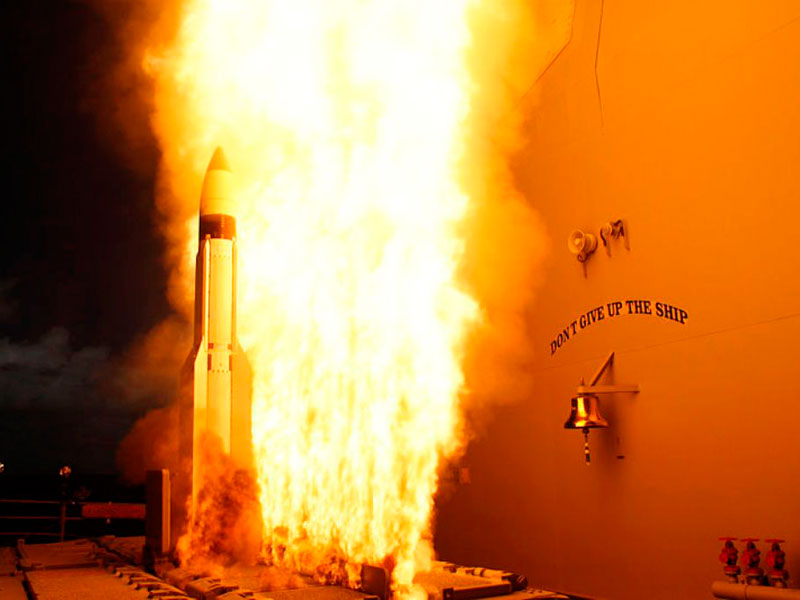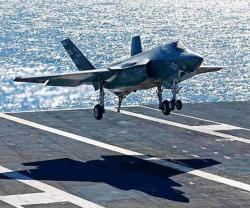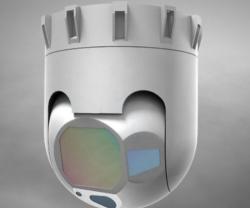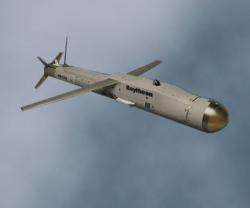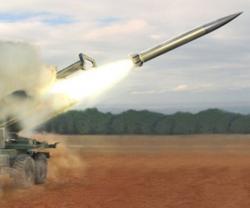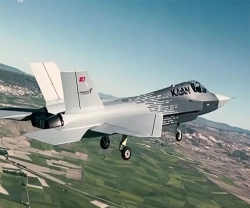Raytheon’s SM-3 Engages Target with Remote Sensor
14.02.2013 North America
A Raytheon Company Standard Missile-3 Block IA fired from the USS Lake Erie destroyed a medium-range ballistic missile (MRBM) target using tracking data from a remote Raytheon sensor payload on the Space Tracking and Surveillance System-Demonstrator (STSS-D) satellites.
“This test further expands our confidence in the SM-3's ability to engage targets using remote, netted sensor targeting. Launching on remote is important because it extends the engagement range of the missile, allowing ships with the SM-3 to expand the battlespace and eliminate threats sooner,” said Wes Kremer, Raytheon Missile Systems' Vice President of Air and Missile Defense Systems.
The MRBM target was launched from the Pacific Missile Range Facility. As it rose above the horizon, the target was acquired and tracked by STSS-D. Threat data was then relayed through the Command, Control, Battle Management and Communications (C2BMC) system to the ship. The ship's crew fired the SM-3 based on STSS track data and before the ship's radar acquired the target.
“STSS-D's unique vantage point in space allows the sensor payload to see the threat early in its trajectory and provide launch quality data sooner than nearly any other option,” said Bill Hart, Vice President of Space Systems for Raytheon's Space and Airborne Systems business.
“We can give our naval warfighters extra time to analyze and respond, by providing target data before the ship can track the threat. That's a tremendous advantage,” he added.
The test proves the “launch on remote” concept, which was first demonstrated during testing in April 2011 when a U.S. Navy destroyer used track data provided by a Raytheon-made AN/TPY-2 radar deployed on Wake Island to engage and destroy an intermediate-range ballistic missile target using an SM-3 Block IA.
“This test further expands our confidence in the SM-3's ability to engage targets using remote, netted sensor targeting. Launching on remote is important because it extends the engagement range of the missile, allowing ships with the SM-3 to expand the battlespace and eliminate threats sooner,” said Wes Kremer, Raytheon Missile Systems' Vice President of Air and Missile Defense Systems.
The MRBM target was launched from the Pacific Missile Range Facility. As it rose above the horizon, the target was acquired and tracked by STSS-D. Threat data was then relayed through the Command, Control, Battle Management and Communications (C2BMC) system to the ship. The ship's crew fired the SM-3 based on STSS track data and before the ship's radar acquired the target.
“STSS-D's unique vantage point in space allows the sensor payload to see the threat early in its trajectory and provide launch quality data sooner than nearly any other option,” said Bill Hart, Vice President of Space Systems for Raytheon's Space and Airborne Systems business.
“We can give our naval warfighters extra time to analyze and respond, by providing target data before the ship can track the threat. That's a tremendous advantage,” he added.
The test proves the “launch on remote” concept, which was first demonstrated during testing in April 2011 when a U.S. Navy destroyer used track data provided by a Raytheon-made AN/TPY-2 radar deployed on Wake Island to engage and destroy an intermediate-range ballistic missile target using an SM-3 Block IA.
Previous PostLockheed Martin, Saudi Arabian Airlines Sign MoU
Latest news
Latest events
DSEI 2025
09 - 12 Sep 2025Excel, London - United KingdomIntersec Saudi Arabia
29 Sep - 01 Oct 2025Riyadh International Exhibition & Convention Centre - Saudi ArabiaDubai International Air Chiefs’ Conference (DIACC 2025)
16 Nov 2025Atlantis, The Palm Dubai - United Arab EmiratesDubai Airshow
17 - 21 Nov 2025Dubai World Central (DWC) - United Arab Emirates

